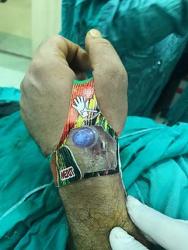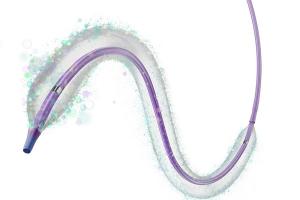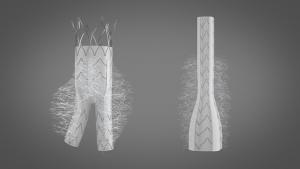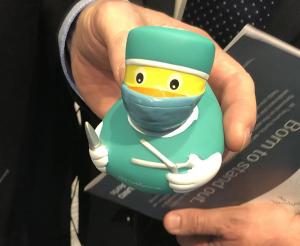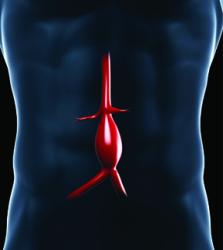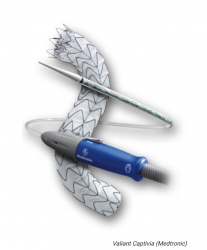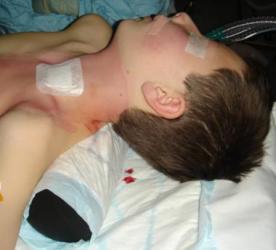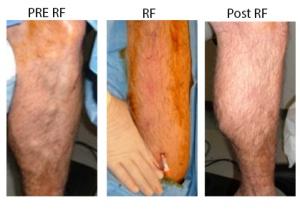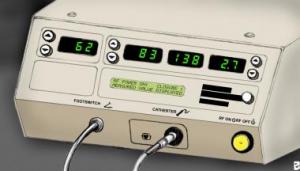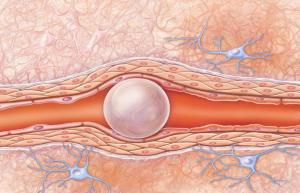The US FDA have approved Biotronik’s drug-eluting stent Orsiro. A press release states that Orsiro is the first and only ultrathin drug-eluting stent to outperform the clinical standard (Xience, Abbott). The device received CE marking in 2011 and has been used to treat more than one million patients worldwide to date.
The PrecludeSync Distal (Merit Medical) is now available in the US, European, Middle Eastern, African, and Asia-Pacific markets. The device is the first product specifically designed to achieve haemostasis of the radial artery during procedures where access is gained via the distal radial artery.
After receiving the CE mark for the device, iVascular launched its Navitian coronary microcatheter on to the market. A press release reports that the microcatheter can be used to facilitate, guide and support a guidewire while accessing the coronary system, the exchange of guidewire and injection of radiopaque contrast media or saline solutions.
Medtronic has issued the following statement regarding revised clinical study data:
Recently, Medtronic became aware of a programming error in the clinical data reporting isolated to the two- and three-year follow-up periods in our IN.PACT Global post-market study, part of the IN.PACT Admiral clinical programme for the treatment of femoropopliteal artery disease. Preliminary results of this study were first released at the Leipzig Interventional Course (LINC) and Medtronic issued a press release summarising the results on January 22, 2019.
France-based medtech company Affluent Medical has announced positive results from its SCOPE 1 clinical trial validating the efficacy of Kardiozis technology: an endoprosthesis using thrombogenic fibre embolisation of the aneurysm sac to prevent endoleak and reintervention.
Hans-Henning Eckstein (Technical University of Munich TUM, Munich, Germany)and Martin Storck (Klinikum Karlsruhe, Karlsruhe, Germany) show Vascular News the rubber duck that they give patients undergoing vascular and endovascular procedures under local anaesthetic. The patient holds the duck, which gives out a squeaking noise when squeezed, thus alerting the physician during the procedure in an effort to help reduce complications such as clamping ischaemia and stroke when performing carotid procedures.
Even though the number of deaths due to ruptured aortic aneurysms (rAAA) has decreased in the USA by 68% in recent years, a significant number of deaths from ruptured aortic aneurysms occur in patients whose demographics exclude them from screening guidelines, according to a newly published study in the Journal of Vascular Surgery.
Medtronic has released new data supporting the long-term durability, safety, and efficacy of the Valiant Captivia thoracic stent graft system for the treatment of blunt thoracic aortic injury (BTAI). Himanshu J Patel of the University of Michigan Department of Cardiac Surgery, Ann Arbor, USA, presented the outcomes at The Society of Thoracic Surgeons Annual Meeting (STS; 26–29 January, San Diego, USA). It was the first ever five-year industry-issued dataset reported for patients with aortic transections undergoing thoracic endovascular aortic repair (TEVAR).
Overview
Background
Central venous access is essential in providing quality medical care to many patients for whom intensive therapy is required. In many situations, a semipermanent tunneled central line is preferred (see Indications). An anterior approach to the internal jugular vein (IJV) is the best option in this situation because it offers the easiest route with a low risk of complications.
Follow-up Care
Compression is of vital importance after any venous procedure. Compression is effective in reducing postoperative bruising and tenderness, and it can also reduce the risk of venous thromboembolism in both the treated leg and the untreated leg.
Overview
Venous insufficiency resulting from superficial reflux because of varicose veins is a serious problem that usually progresses inexorably if left untreated. When the refluxing circuit involves failure of the primary valves at the saphenofemoral junction, treatment options for the patient are limited, and early recurrences are the rule rather than the exception.
Background
Venous air embolism (VAE), a subset of gas embolism, is an entity with the potential for severe morbidity and mortality. Venous air embolism is a predominantly iatrogenic complication that occurs when atmospheric gas is introduced into the systemic venous system. In the past, this medical condition was mostly associated with neurosurgical procedures conducted in the sitting position.

Performance diagnostique de l’interféron gamma dans l’identification de l’origine tuberculeuse des pleurésies exsudatives

A Mixed Phenotype of Airway Wall Thickening and Emphysema Is Associated with Dyspnea and Hospitalization for Chronic Obstructive Pulmonary Disease.

Radiological Approach to Asthma and COPD-The Role of Computed Tomography.

Significant annual cost savings found with UrgoStart in UK and Germany

Thrombolex announces 510(k) clearance of Bashir catheter systems for thromboembolic disorders
Phone: (028) 3981 2678
Mobile: 0903 839 878 - 0909 384 389









